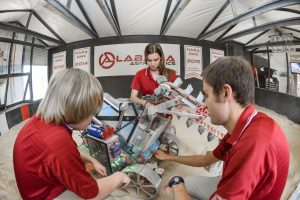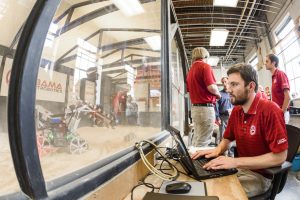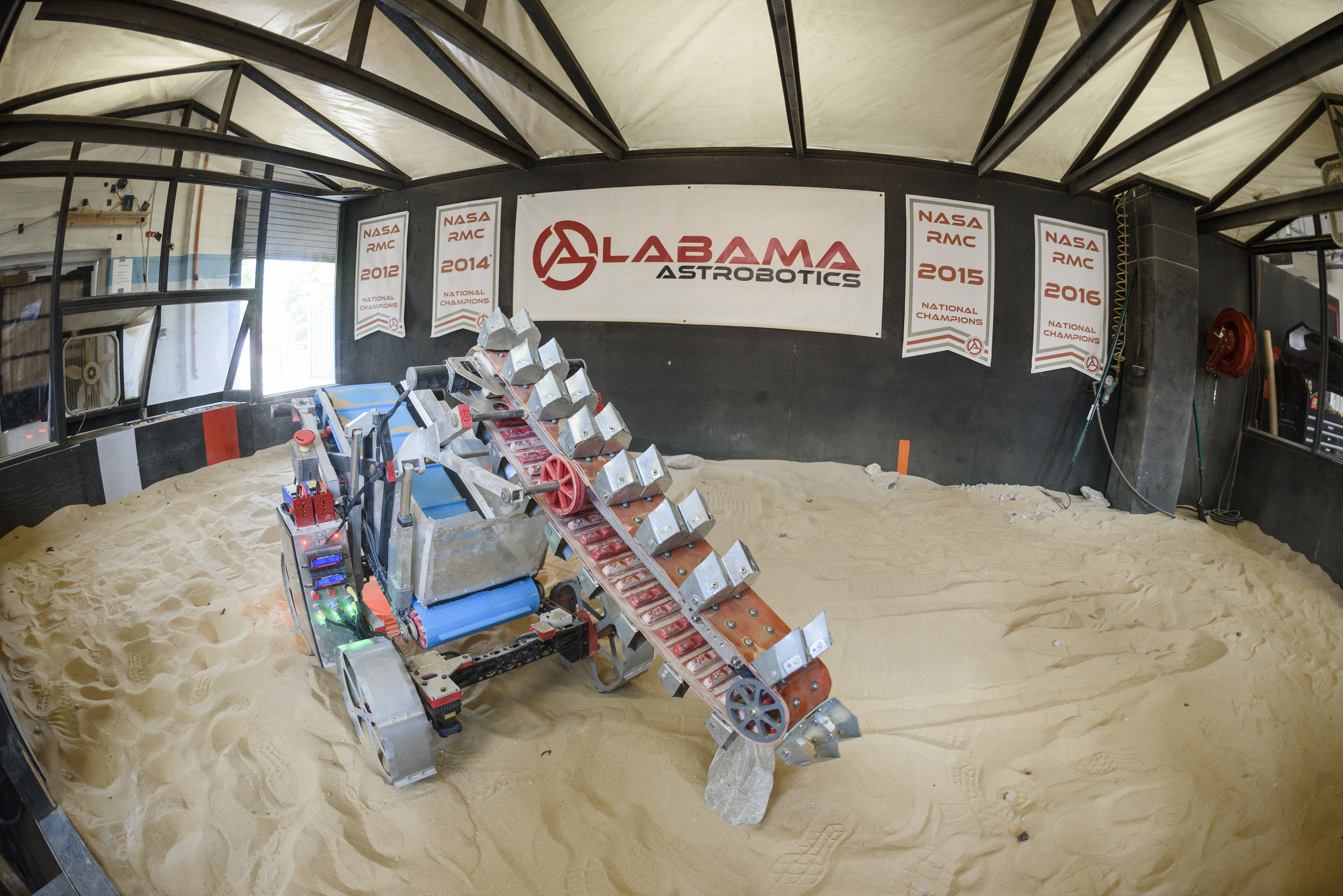
TUSCALOOSA, Ala. — NASA’s annual robotics challenge presents a new problem for college students to solve, and students at The University of Alabama hope their solution can win the contest for a fourth straight year.
Made up of about 65 students from across eight disciplines including engineering and computer science, Alabama Astrobotics is the only team to win more than once in the eight-year history of the NASA Robotic Mining Competition, placing first in 2012, 2015, 2016 and 2017.
“Obviously, we’re always aiming for a championship and producing the best robot we can, but creating a robot this robust and operational is a success in itself,” said Curtis Mitchell, co-leader of mechanical systems for the team and a rising senior from Orlando, Florida.
The students compete in the contest at Kennedy Space Center in Florida the week of May 14.
Featuring more than 50 college teams and 500 students, the NASA contest challenges student teams to build a robot capable of navigating and excavating simulated Martian soil, or regolith.
Contest organizers revised the rules and rubrics this year to reflect the discovery that water ice is prevalent throughout the Red Planet. The challenge is to mine the precious icy regolith, simulated with gravel in the contest, since water ice will provide oxygen, water and fuel for future off-world colonists.
What that means for the contest, though, is no points are awarded to teams for digging the top foot of regolith. Teams get points for collecting the gravel at the bottom of the arena floor.
“It’s the hardest year we’ve ever been a part of,” said Rebecca Dietz, a Waleska, Georgia native and recent mechanical engineering graduate serving as systems engineering lead for the team. “We want to use designs we understood and had experience with, but we’ve had to do heavy modifications to solve the new problem.”
In another tweak, obstacles, such as rocks in the arena, will be bigger, likely requiring robots to go around them instead of over them. While obstacles are bigger and holes deeper, teams will still have only 10 minutes to complete the task and face the same requirements on weight as in year’s past.
In the past, UA has essentially strip-mined the top regolith with a lightweight robot navigating the arena while plowing over obstacles, but this challenge requires the robot to be sturdier to dig a 14-inch trench.
“This has been the toughest year I’ve been a part of, but I feel like we’ve probably learned the most,” said team lead and electrical engineering student Max Eastepp. “This year has been just problem after problem, but you don’t learn without breaking things,” said the New Orleans, Louisiana native.

Like every year, the team designed and built a new robot, but tried to stick with the winning design of the past three years with a bucket ladder excavator and an offloading conveyor belt. However, the digging buckets are made of steel this year, instead of aluminum, and components that were 3-D printed plastics are now metal, Eastepp said.
One of a few teams to complete the contest with an autonomous robot, Alabama Astrobotics will continue to use LiDAR sensors, a sort of radar that uses light, that can scan in 3-D using 16 lasers to measure distance and determine an object’s position. The team also kept an electronic device called an inertial measurement unit to help make the autonomy more reliable.
But the students also upgraded the robot’s ability to operate on its own, programming it to recognize and drive around the bigger obstacles.
“The system looks similar to what we’ve done in previous years, but it truly is a brand new robot, brand new system,” Mitchell said.
In addition to the on-site mining category, teams must also submit an engineering paper that explains their design philosophy. The teams also get extra points for engaging in social media and outreach to local schools throughout the year, and they have the option of giving a presentation to judges while at Kennedy Space Center.
Dr. Kenneth Ricks, team adviser and associate professor of electrical and computer engineering, said the NASA contest helps students learn technical and engineering concepts, software development, hardware design, systems integration along with project management, staying on budget and keeping a schedule.
“This is very much a real-world engineering problem,” he said. “The students really get hands-on experience for how the whole project moves forward. From an educational standpoint, it has been a great year.”
The team received funding from the Alabama Space Grant Consortium, NASA, Dynetics, Fitz-Thors Engineering, Crank N Chrome, Ion Motion Control and the University.
Contact
Adam Jones, UA communications, 205-348-4328, adam.jones@ua.edu
